STUDENTS PROJECTS
2010
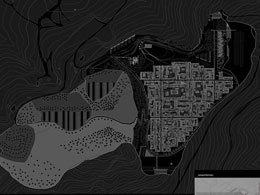
29 April, 2011
“nekron topio”
New cemetery in the rehabilitation area of Mousamas quarry, mount Egaleo.
Student : Georgakopoulou Nikoleta
Professors : K. Moraitis, N. Marda
N.T.U.A
Date : March 2010
A quarry is an indisputable "different - other" place and therefore suitable for the incorporation of a cemetery.
The concept of transition bore the idea of an enduringly transitional landscape.
The synthetic procedure had as an inspiration some mythological information concerning the after death journey of the soul.
Finally the form came as a result of the use of an element that bears a symbolic quality for a cemetery, the wall.
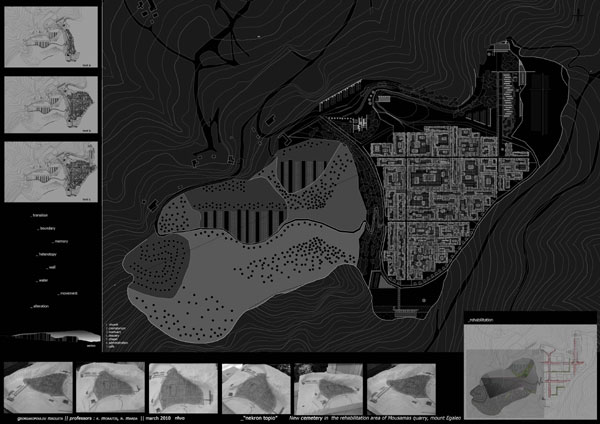
_there's something missing from mount Egaleo, long time now, a depredation left behind one big void
A quarry is an indisputable transitional place. Speaking in terms of landscape it can be one that presents a unique form. These two qualities appoint it a "different - other" place and therefore suitable for the incorporation of a cemetery, since the "city of the dead" is according to Foucault a "par excellance" heterotopy. However, a thorough observation of the site made it clear that a restitution of some kind was also necessary. Thus the development of this dissertation was shaped, through the context of a major reinstatement of the natural element.
The concept of transition, that characterizes the quarry as a realistic landscape but also the cemetery as a symbolic landscape, bore the idea of an enduringly transitional landscape. Structured on a grid oriented east to west, as the Christian tradition demands for the burial, this enduringly transitional landscape is formed by a number of green "islands". These islands concern different sized areas that slide and mix on the grid. Each one will be planted with a specific type of tree, different each time, so that the view of this landscape can change throughout the year either in texture or in color or in density. Evergreen, deciduous and floriferous trees form a puzzle of images of a landscape in motion.
The structure of the movements and the entire synthetic procedure had as an inspiration some mythological information concerning the after death journey of the soul. According to the beliefs of 5th b. c. century the transition to Hades was a three phase journey and required the leading of Hermes, Charon and Hades. This mythological report was the inspiration for the three "gates" of death. Two separate movements, vehicle and pedestrian, that are divided in three stages- 3" gates" - of different processing approach. Tools of this processing: oversight, boundaries, views and the natural element.
Finally the building requirements apart from the basic elements of tradition: ceremony- church, burial-graveyard, exhumation- ossuary, and the peripherals: administration, café, commercial uses, also included a Crematorium according to the new legislation. The form came as a result of the use of one structural element that bears a symbolic quality for a cemetery, the wall. As a structure, the wall, is an austere structural formation of boundary and with its quality to separate, can thus express the outmost spatial variation/ "heterotita". So that the entity of the design could adapt to the concept of boundary, of movement and maybe even of heterotopy.
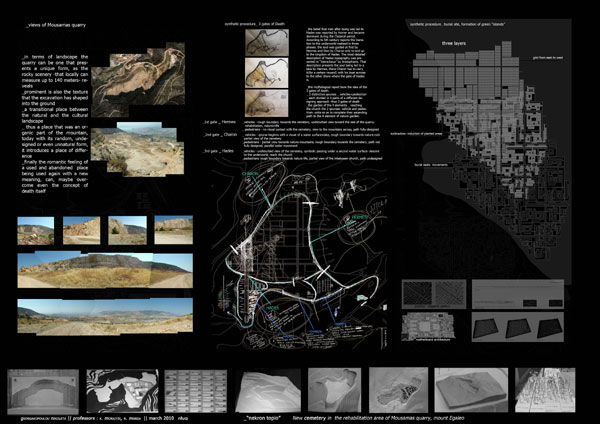
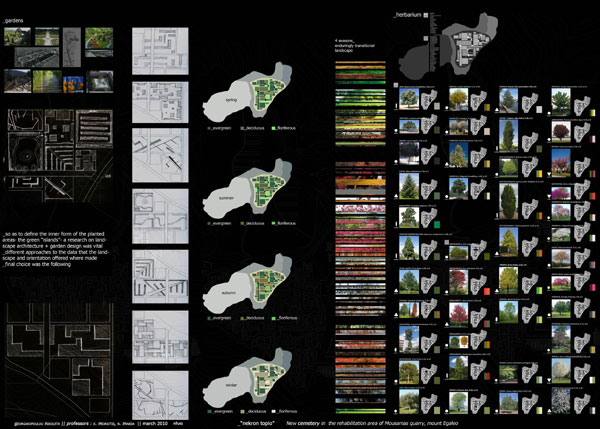
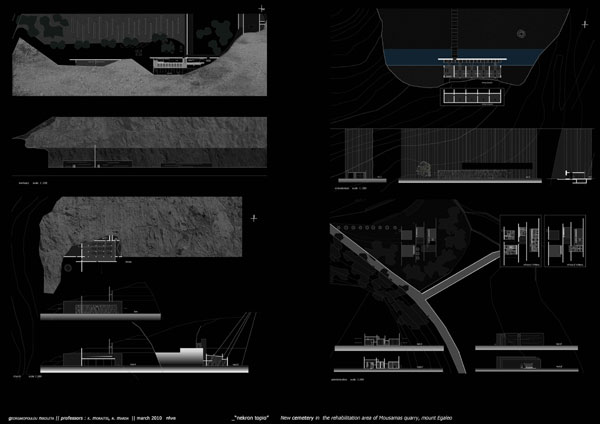
Related articles:
- Texas American Society of Landscape Architects Student Competition ( 18 April, 2012 )
- Cemeteries in the cities ( 24 January, 2015 )
- Buffer zone. The land of living ( 13 April, 2015 )










